The year 1923 was characterized by economic prosperity and a world population that had topped 2 billion. Time Magazine published its first issue, and Adolf Hitler led the Nazi Party in a failed coup attempt in Germany. In this year, insulin became widely available to treat diabetes, and surgeons performed the first successful brain tumour operation.
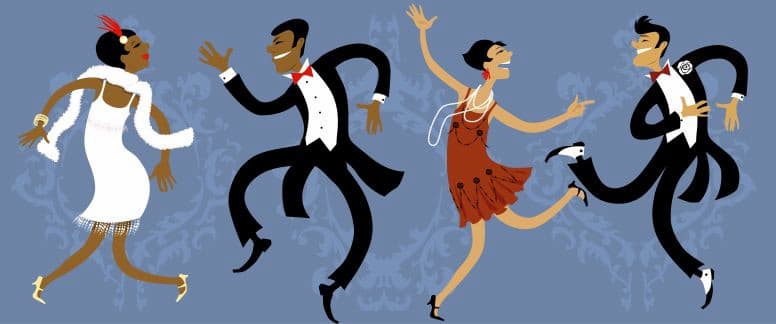
Jazz Age
Edwin Hubble discovered the world’s first Cepheid variable star and Howard Carter opened the tomb of Tutankhamen. The Great Kanto earthquake devastated the cities of Tokyo and Yokohama, and Mount Etna roared to life. And since 1923 was part of the “Roaring Twenties,” and the “Jazz Age,” there was plenty of music. A Sony Classical disk has recently issued a recording of pieces for solo piano composed in 1923, so we thought it might be fun to take a quick listen.
Frederick Delius: 3 Preludes
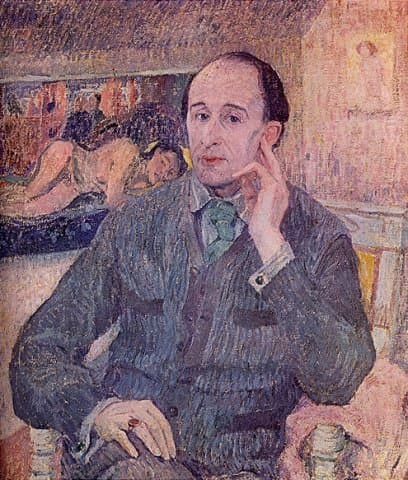
Portrait of Frederick Delius
Frederick Delius: 3 Preludes (Yaara Tal, piano)
Frederick Delius (1862-1934) really had to battle his parents when he decided to become a musician. The family had immigrated to England from Germany, and his father established a wool business in West Yorkshire. Although both of his parents were highly musical, a career in music was out of the question. Fritz fought long and hard battles before he was finally allowed to attend the Leipzig Conservatory. He watched Brahms, Tchaikovsky, and Nikisch conduct, and he made great friends with Edvard Grieg.
However, Delius was a free spirit and after a mere two years of study, he moved to Paris and made France his permanent home. Many of his compositions were first heard in Germany, and his reputation only gradually spread to England. Delius battled severe health problems in his early 60s, but he continued to compose large-scale compositions. By the 1920s Delius had achieved genuine popular success, and he decided to compose a number of piano miniatures. The 3 Preludes were written in 1923, and despite his health crises, they beautifully reflect the optimism and gaiety of the interwar years in France.
Federico Mompou: Dialogues I-II
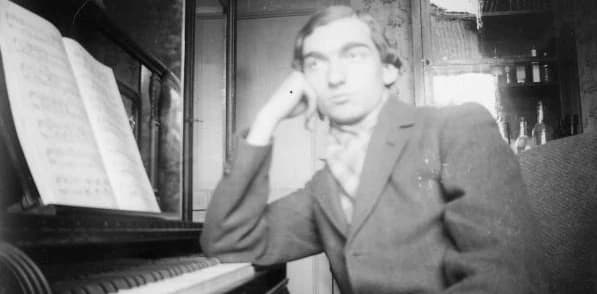
Frederic Mompou
Federico Mompou: Dialogues I-II (Yaara Tal, piano)
The Catalan composer and pianist Federico Mompou (1893-1987) is best known for his solo piano music and his songs. His music is characterized by Impressionist elegance, simple and direct melody, and the deep and haunting emotions of folk music. The meditative and contemplative qualities of his music speak to the individual in intimate terms, conjuring “distant nostalgia like a long-forgotten childhood memory from another world.”
Mompou returned to Paris in 1921, and his music was publicly performed and admired. The critic Émile Vuillermoz claimed that Mompou was “the only disciple and successor to Claude Debussy.” His Dialogues I-II date from 1923, and these miniatures evoke the poetic ideas essential to Mompou; the mystery of nature conjuring up an imaginary ritual. The sound world is delicate and unspectacular, and we may well hear it as genuine, natural, sincere, and authentic.
Matthias Hauer: 60 Kleine Stücke, Op. 25
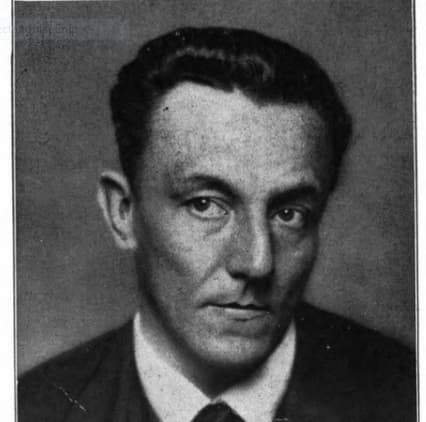
Matthias Hauer
Matthias Hauer: 60 Kleine Stücke, Op. 25 (Elisabeth Klein, piano)
Matthias Hauer was born in 1883, and he taught himself to play the piano, the cello, and the violin. He quickly dabbled in composition and played his music in public, but nobody was particularly enthusiastic about his “music of the spheres,” composed in a unique musical system that accorded equal importance to all 12 notes of the chromatic scale. In fact, Hauer published a treatise on 12-tone music already in 1920, almost four years before Arnold Schoenberg composed his first work in that particular system.
Hauer (1883-1959) became a highly inspirational figure during the 1920s and 30s, and the writer Otto Stoessel even wrote a biographical novel about Hauer. Additional literary works featuring Hauer, predictably under different names, were written by Franz Werfel, and Arnold and Wilhelmine Keyserling. Hauer was a well-known personality at the time, but once his music was classified as “Degenerate Art,” he was quickly forgotten. His 60 “Little Pieces” from 1923 all carry extensive poetic titles that are communicated with emotional directness and clarity.
Arnold Schoenberg: 5 Klavierstücke “Walzer”
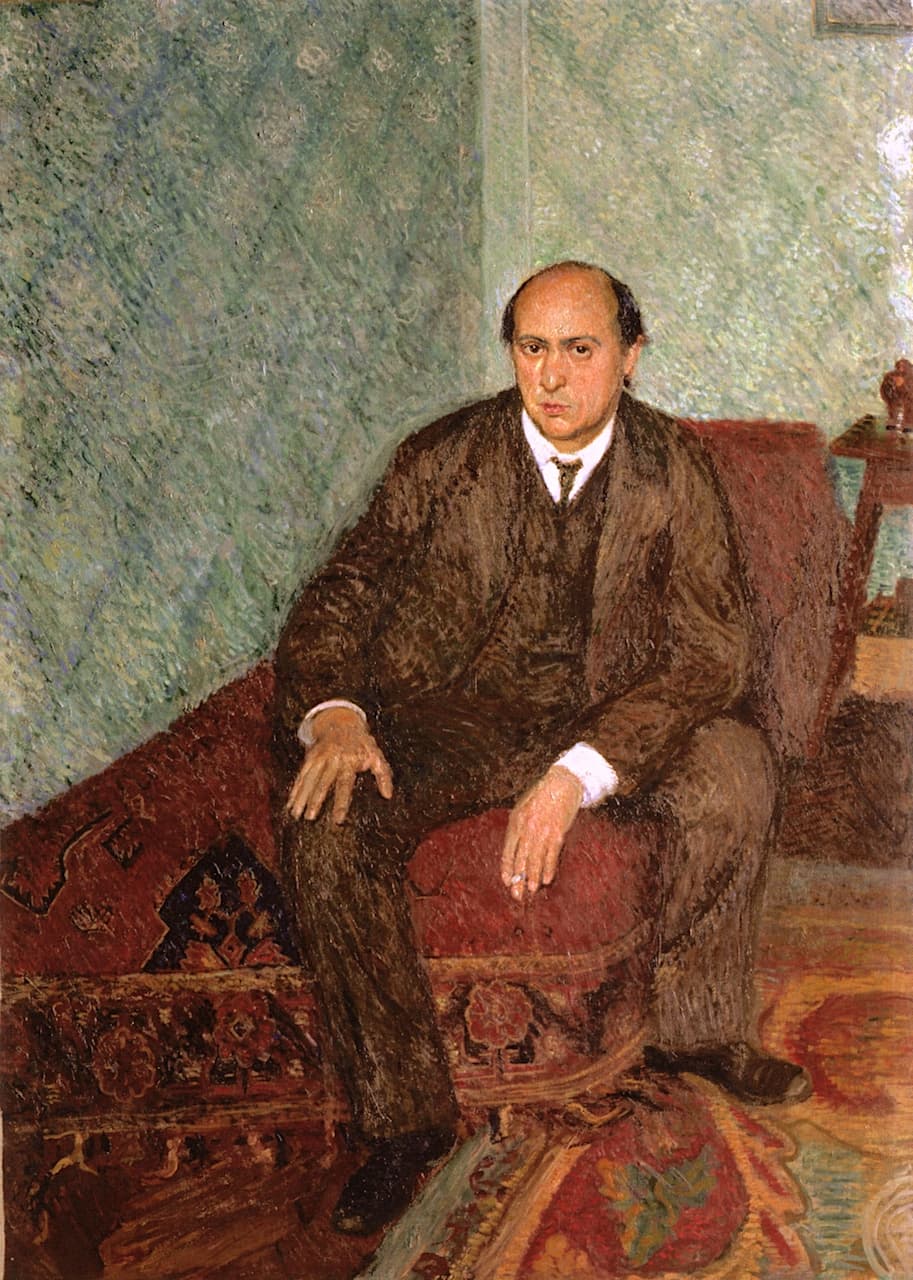
Portrait of Arnold Schoenberg by Richard Gerstl
Arnold Schoenberg: 5 Klavierstücke “Walzer” (Peter Serkin, piano)
Talking about Arnold Schoenberg (1874-1951)! In 1923, Schoenberg published a treatise on playing the piano. As he writes, “Anyone writing for piano should never forget that even the best pianist has only two hands. The only way is to write as thinly as possible: as few notes as possible.” Schoenberg was not a pianist, but as in other mediums, he strove for clarity through the most efficient means of expression. It seems that he had a clear sound expectation when writing for the piano, and he often used the instrument to test out new ideas.
Schoenberg began work on three sets of small compositions in the summer of 1920. It took him almost three years to complete the Five Piano Pieces op. 23, the Serenade op. 24, and the Suite for Piano op. 25. The “Waltz” of the Five Piano Pieces dates from 1923 and it is considered the first twelve-tone work. The basic shape sounds twelve notes in a fixed order, and it appears as the waltz melody, as harmony, and rhythmically shaped into three motives.
Hanns Eisler: Piano Sonata No. 2, Op. 6
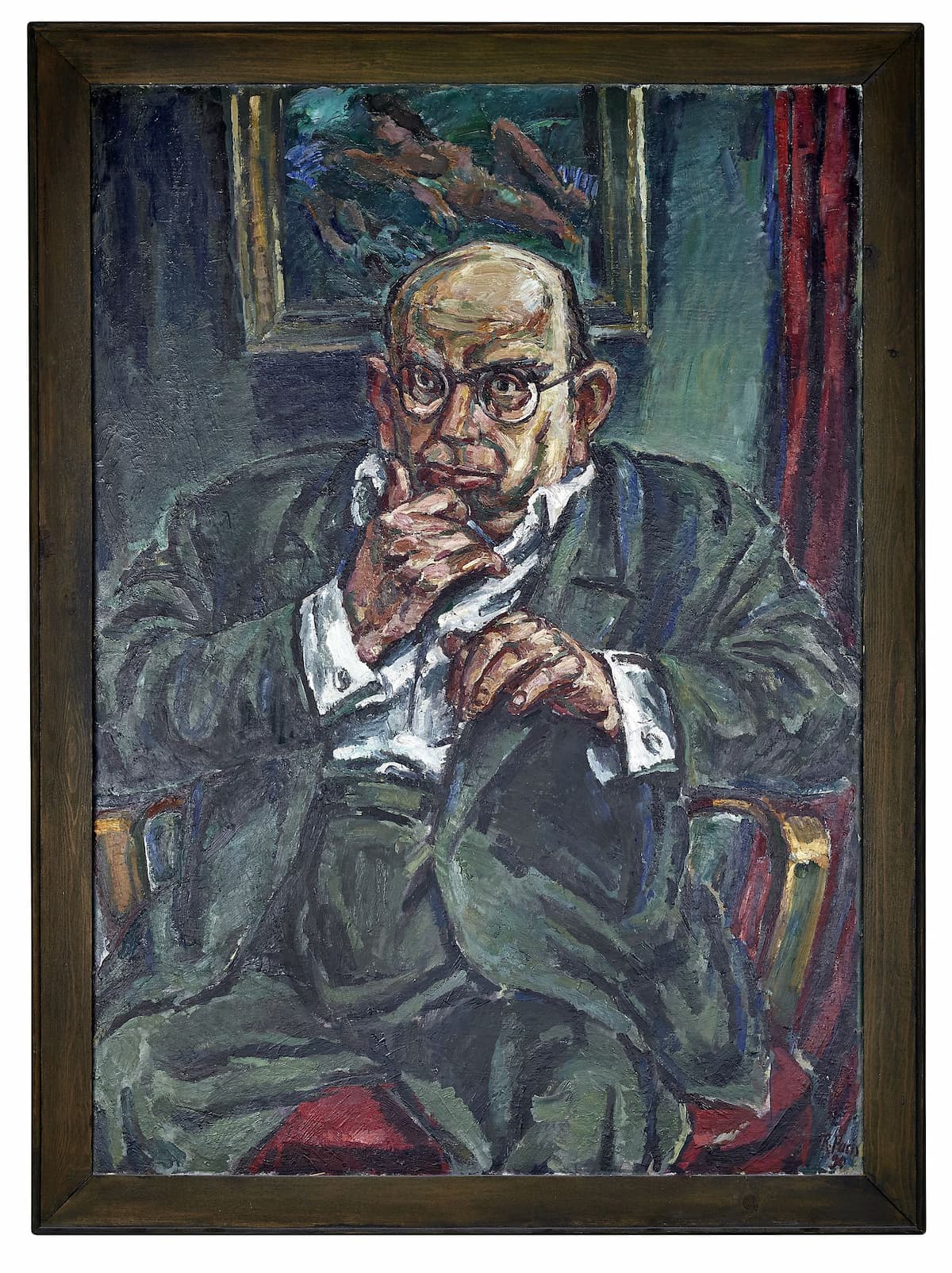
Portrait of Hanns Eisler by Ronald Paris
Hanns Eisler: Piano Sonata No. 2, Op. 6 (Tiny Wirtz, piano)
Hanns Eisler (1898-1962) was an enthusiastic student of Arnold Schoenberg, and he first became acquainted with the first twelve-tone works of the “highly revered master” in August 1923. Deeply impressed, Eisler started to explore this new compositional technique, and he produced some initial experiments and sketches that resulted in his Second Piano Sonata, Op. 6. Although it is called a sonata, the work is actually written in the form of a Variation set.
It’s an unusual piece, as the pianist Yaara Tal explains, “When listening to Eisler’s theme, it is not at all obvious that the work could have been dodecaphonically conceived, since a characteristic component of the theme is the frequent repetition of notes. Eisler brought this quite special soundscape into a musical form that traditionally did not exist at all. The result is a virtually multi-hybrid construct: the search for sonata form’s traditional building blocks is doomed to failure. Even the variations, which at the beginning of the work are still audibly separated from one another, gradually dissolve within a rhapsodic style that is further elaborated in a quasi-improvisational manner. In that respect, the piece actually resembles a fantasy.”
Leoš Janáček: Intimate Studies, “Melody”
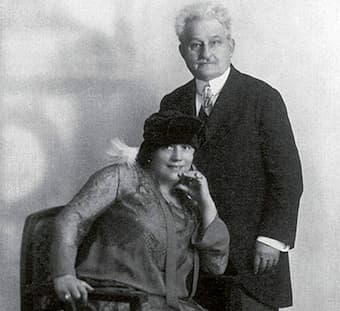
Janáček with Kamila Stösslová
Leoš Janáček: Intimate Studies, “Melody” (Yaara Tal, piano)
Let’s depart from the world of 12-tone composition and turn to the Czech composer, folklorist and music theorist Leoš Janáček (1854-1928). He was once described as “a meteorite that landed in music history.” In a way, his music aesthetic is similar to Schoenberg and Eisler, as he was always looking for the essence in music. There are no flourishes or superficial embellishments, but focused attention to a musical world of finely nuances structures in miniature. He was not trying to sound beautiful, but searched for authentic expressions in a clear and condensed form.
The collection of short pieces titled Intimate Studies was first published in 1994, but many of these miniatures date from the 1920s. In essence, we find a collection of eleven tone poems and studies, some of them complete miniature work, and some unfinished kernels of ideas. And some come from an “Intimate Diary” in which the composer recorded his passionate love for Kamila Stösslová, whom he first met in 1917.
Émile Jaques-Dalcroze: 3 Entrées dansantes
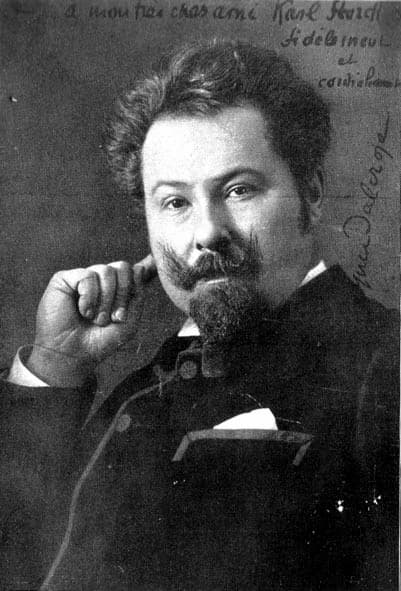
Émile Jaques-Dalcroze
Émile Jaques-Dalcroze: 3 Entrées dansantes (Yaara Tal, piano)
I have to confess that I was not familiar with the Swiss composer, musician, and music educator Émile Jaques-Dalcroze (1865-1950). I read that he was born in Vienna, and subsequently studied in Paris. Dalcroze was particularly interested in the relationship between music and the body and the emotional processes involved. In fact, he developed the concept we call “eurhythmics,” which teaches the ideas of rhythm, structure, and musical expression using movement. This method “allows the student to gain physical awareness and experience of music through training that takes place through all of the senses, particularly kinaesthetic.” In terms of composition, his 3 Entrées dansantes, composed in 1923, reflects the enthusiasm for fashionable American dances throughout Europe.
Alexandre Tansman: 4 Danses Miniatures
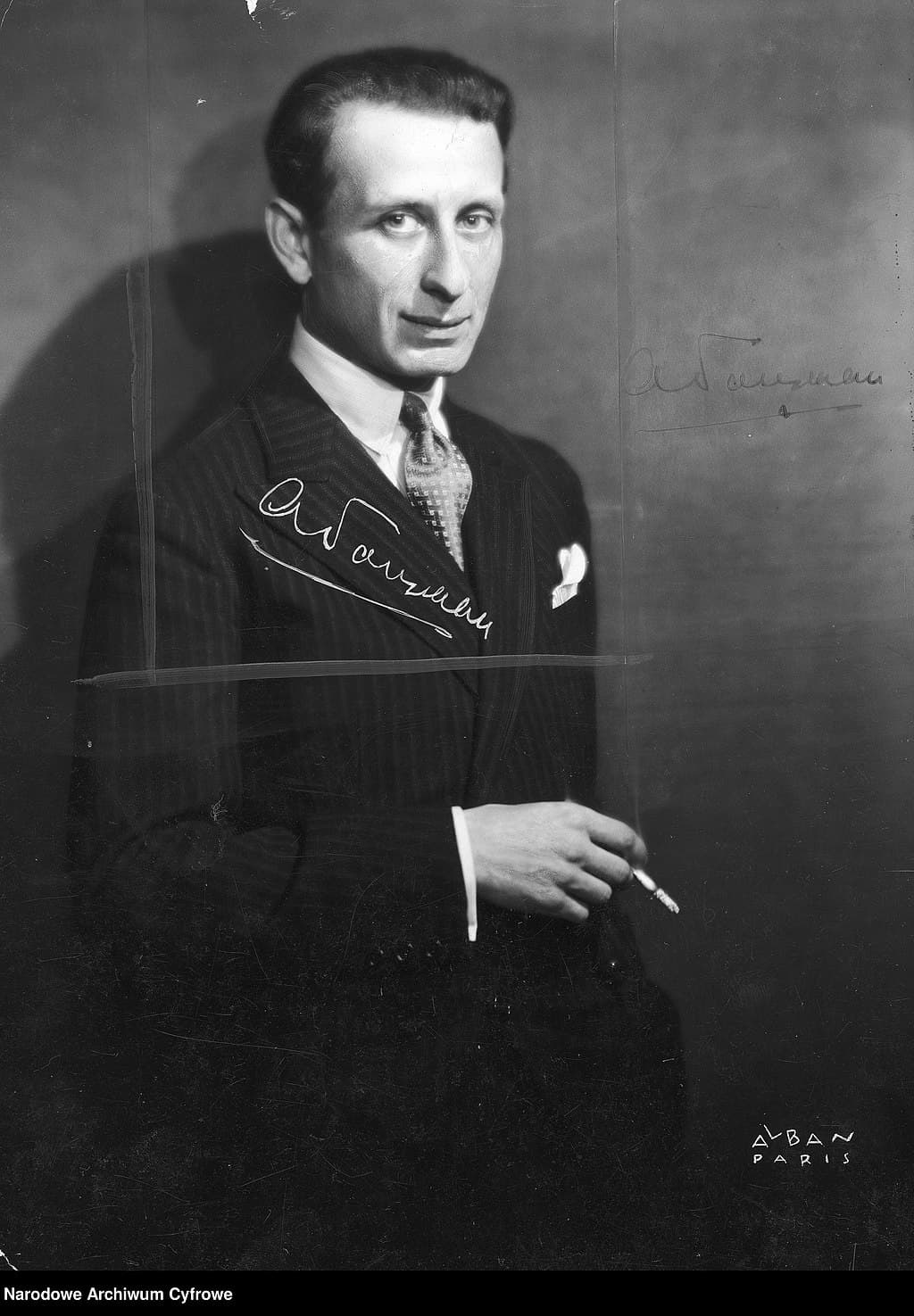
Alexandre Tansman
Alexandre Tansman (1897-1986) was born in Poland and quickly began to compose music “in the style of Chopin.” He won multiple composition prizes under different pseudonyms, and he obtained his passport from the first President of the Polish Republic, Ignacy Paderewski in order to study in Paris. Tansman immediately became a member of the Parisian musical life and made friends with the most important musical personalities of the time, including Bartók, Gershwin, Milhaud, Prokofiev, Schoenberg, Stravinsky, and countless others. His music was played in Paris, and then throughout Europe and the United States. His 1923 Quartre danses miniatures are a typical dialogue with history that defined the central characteristics of neoclassicism. Isn’t it fascinating how many different forms of musical expressions of varying styles were created during this short 12-month period?
For more of the best in classical music, sign up for our E-Newsletter
Alexandre Tansman: 4 Danses Miniatures (Yaara Tal, piano)


